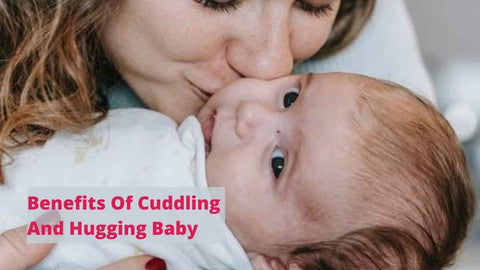Best Tips on Breastfeeding
Breastfeeding is the most convenient and cost-efficient way to feed your baby. But it is not an easy task for new moms. It is a learning process that you have to complete along with your baby.

While breastfeeding you should remember that every baby is different and their body’s nutritional requirements also differ. Some babies need milk every hour while others may need it after 2 to 3 hours.
In this article, we are going to show you some tips on breastfeeding to help you feed your baby in the most comfortable and convenient way possible.
| Looking for more information on breastfeeding? Read Breastfeeding: Everything You Need To Know for more information. |
The Best Breastfeeding Positions and Latch
For your baby to feed properly, it must latch onto your breast properly. This can be a challenge for first time moms. So let’s get into it.
Latch
What is latch in breastfeeding? Latch refers to the position of your baby’s mouth on your breast. Latching can be easier or harder depending on how you hold your baby. If your baby can suckle, swallow and breathe easily then you are in a good latching position.

Signs that your baby’s latch is good:
- The lips of your baby are curled out like a fish and mouth is wide opened just like a yawn.
- Baby’s chin is touching your breast.
- The tongue of the baby should be over the lower gum.
Signs of a poor latch:
- The Baby’s mouth is not open enough.
- The lips of the baby are curled in instead of curling out.
- Baby’s chin doesn’t touch your breast.
- The tongue of your baby is behind the lower gum.
You want to make sure that your baby is in a good latch position to ensure that the feeding time is comfortable for you and the baby is satisfied at the end. Here are a couple different ways that you can hold your baby so that they are in the proper latch position:
Football Hold Position
This is the most comfortable and easiest position for women with c-section or the ones that have larger breasts. Football hold position (also called Clutch hold) is the best position to provide support to your baby’s neck and head.
To get into the Football Hold position, follow these steps::
- While holding your baby, place your fingers and thumb under the baby’s neck and ears, keeping him or her still.
- Tuck your baby under your arm in a way that the chin, chest, and knees of your baby are facing your breast.
- To raise your baby higher, you can place a pillow next to you.
Cradle Position
The cradle position is the most common position for breastfeeding.
If you want to try this position here are a few tips for you to follow:
- Turn your baby in a way that his or her chin, chest, and knees are facing your breast.
- Your baby’s head should be in the bend of your elbow.
- Place your arm behind your baby’s back and your hand behind his bottom for support.
The cradle position is considered the most effective position, but some mothers find it difficult because the mother has less control over the baby’s head.
Breastfeeding Positioning Tips for New Moms
Follow these simple tips to position your baby so that you can achieve a good latch:
- After your baby is born, hold him or her skin-to-skin for at least an hour. Babies can use their senses to locate breasts and latch on.
- You should carefully and properly support your baby’s neck, head, and back because infants don’t have control over these body parts.
- Your baby will make a sound during suckling, swallowing, and breathing if he or she is in a good position and if the latch is good.
How to Relieve Pain during and after Breastfeeding
Sometimes breastfeeding can hurt. To ease breastfeeding discomfort, you can follow some basic guidelines. Follow these directions to relieve pain during and after breastfeeding:
- Applying breastfeeding ointment like Lanolin can help you to relieve some pain. These products are helpful especially with breastfeeding mothers because you don’t have to wipe them off your nipples for breastfeeding.
- Use our 6pk Organic Bamboo Washable Maternity Nipple Pads that are made from very soft and absorbent fabric that can relieve soreness and breast tenderness.
- You can also apply a warm compress to sore, engorged breasts to get some relief.
- Leave your nipples exposed to air for some time after feeding. It will help you to ease your pain of cracked or bleeding nipples.
- Don’t wipe your nipples after breastfeeding and let them air dry because your milk acts as a moisturizer for your skin.
- If the pain or discomfort is constant you can take some pain-reducing pills like Tylenol or Motrin.
- Practice some relaxation breathing techniques that you can learn during prenatal birthing classes.
- Breast compressions can also help you to reduce some pain because they will reduce the time your baby spent on your breast.
- Consider using nipple shields while breastfeeding to allow your nipples heal, or your baby learns to latch properly.
How Often Should You Breastfeed?
Every baby has different needs. Therefore, it completely depends on your baby on how often he or she needs to be fed. Here are some guidelines about how often you need to breastfeed your baby according to his or her age.
First few days after Birth

IMPORTANT: If you have any questions in mind about your baby’s healthy growth or how much breast milk he or she needs, consult your healthcare provider.
Some guidelines are as follows:
- Your newborn has a very tiny tummy. Babies at this age don’t need to drink a lot of milk to become full.
- You can hear your baby suckling on your breast and swallowing your breast milk.
- Your baby needs to be fed after every 1 to 3 hours. As your baby sucks and swallows, your milk supply will increase as per your baby’s demands.
- You should not give infant formula to your baby in the first few days. Before giving any formula to your little one, consult your baby’s pediatrician or doctor.
First few Weeks and Months after Birth

As your baby grows, his or her body requirements also change. The baby now needs to drink more because his or her stomach also gets bigger. During the first few weeks and months:
- The time during each feed increases. Babies usually need to feed after 2 to 3 hours but frequent eaters need milk after every hour.
- Your baby’s sleep pattern will begin to get longer (from 4 to 5 hours). When they wake up after a longer sleep period, they need more milk to fill their tummy.
- Your baby will need different amounts of milk at different times. Some feeding sessions can be longer than others. This is normal in the first few weeks. Babies stop eating when they are full. When your baby is drowsy after feeding he or she is satisfied.
- In 24 hours, a healthy baby needs breast milk about 8 to 12 times.
From 6 months to 12 months

At this stage, you can introduce solid foods to your baby. Although babies get nutrition from solid food, they still need breast milk to satisfy their hunger.
- Your baby will begin to make hunger cues, so pay attention. Other times babies need breastfeeding just to soothe themselves. You should be available to meet your baby’s demands.
- If your baby doesn’t want breast milk after eating solids, try breastfeeding before you give any solids.
- Even when your baby starts solid foods, your breast milk is still the most nutritious thing for him or her. Therefore, you should not skip it.
After 12 to 24 Months

- Now your baby will be having a bigger portion of solid foods. He or she may need to breastfeed just one or twice a day. But the condition can vary for different babies. Follow your child’s cues about their needs of breastfeeding.
How Much Should a Newborn or a Baby Feed?
Newborns to 2 Weeks Old
Newborns usually drink after 3 to 4 hours in 24 hours. In the first few days, the baby might take only half an ounce per serving. After 2 weeks, the normal serving is 1 to 2 ounces.
2 Months Old
A healthy baby at 2 months of age normally drinks 4 to 5 ounces per feeding.
4 Months Old
A 4 months old baby can drink 4 to 6 ounces per serving.
6 Months Old
Your baby might take 7 to 8 ounces after every 4 to 5 hours.
|
Are you producing more milk than needed either before, during or after feeding time? Then try our reusable Breast Milk Collectors. They are food grade and can be used even under your normal clothing in your bra, and include storage bags. |
What should I eat during Breastfeeding?
You might be wondering which food and how much to eat when pregnant or breastfeeding.
As you already know, your breast milk is the only true source that gives your baby all the nutrition it needs until he or she starts solids. You need to keep your diet healthy and full of nutrition.
You must add plenty of fruits and vegetables like potatoes, avocados, and other starch-rich ingredients to your diet. In addition to this, oats, brown rice, and wholegrain cereals are also important food items during breastfeeding.

Other rich food items like chicken, eggs, pulses, lentils, fish, and beef are a good source of proteins. You can also include healthy fats in your diets like olive oil, nuts, seeds, and oily fish.
What foods should I avoid during Breastfeeding?
Breastfeeding means everything you eat will indirectly go to your baby. There aren’t any specific foods to avoid but you should stay away from caffeine alcohol as it can be dangerous for your baby’s health. Caffeine and alcohol consumption should be limited or avoided as much as possible.
Conclusion
We hope these tips have provided you with the information you need for a good breastfeeding experience. If you have any questions or need help, contact your healthcare provider immediately. We hope you enjoy this time with your young one.




